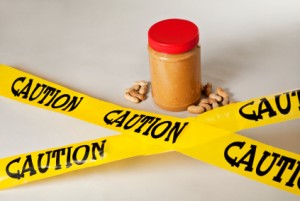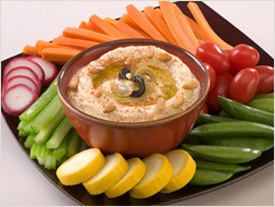 My son has a severe, life threatening allergy to peanuts and tree nuts. We discovered this food allergy when he was two years old and we just could not figure out why he had severe asthma, requiring multiple emergency room visits, steroids and the like. He also randomly developed enormous hives all over his body and had difficulty breathing when the hives occurred. We took him to an allergist who tested him with both a skin test and a blood test, and we learned of the severity and breadth of the allergies.
My son has a severe, life threatening allergy to peanuts and tree nuts. We discovered this food allergy when he was two years old and we just could not figure out why he had severe asthma, requiring multiple emergency room visits, steroids and the like. He also randomly developed enormous hives all over his body and had difficulty breathing when the hives occurred. We took him to an allergist who tested him with both a skin test and a blood test, and we learned of the severity and breadth of the allergies.
Food allergies are different from food intolerances. A food intolerance can cause stomach upset, gastric distress, and possibly digestive issues in the form of diarrhea and constipation. Many people claim that they have a food allergy when a food does not agree with them, and this diminishes the severity for those with a true, life threatening allergy. A food allergy is defined as an abnormal response to a food triggered by your body’s immune system, and is most often triggered by the so called “Big 8”. These eight foods account for 90% of all food reactions and are milk, egg, peanut, tree nut, shellfish, sesame, wheat and soy.
You may hear of a person outgrowing their food allergies, but peanut and shellfish most often remain as lifelong allergies. A food allergy affects the breathing and heart and can, if not stopped in time, lead to death. People who have been diagnosed with a food allergy are often prescribed an epi-pen, an auto-injector of epinephrine that must be injected into the upper thigh to stop the reaction.
Perhaps your child has a food allergy. Maybe a classmate has a food allergy. Possibly your child’s school has decided to go peanut free to accommodate the children who have an allergy. Every year, parents are up in arms over this issue. “What will my child eat?” they query. “He only eats peanut butter! Nothing else! It’s not fair to me to have to figure out something different to pack! It’s difficult!”
Yes, it is. However, if it keeps one child from death by anaphylaxis, I’m glad to do it.
One thing that a parent of a food allergic child must realize is the reality that the food allergy belongs to the child. It isn’t the parent’s allergy, it isn’t the school’s allergy, and the allergy is not the responsibility of the community. That doesn’t mean that everyone in the child’s life shouldn’t work together to keep the child safe. The child with food allergies must learn to navigate the world around their allergy, much as a blind person navigates around an obstacle. This is a vital lesson that cannot be underestimated. You are your child’s advocate and teacher, and it is up to you to teach your child to be responsible for his allergen. Teach your child to read labels. Have lessons on the tricky words that manufacturers use to cover up the ingredients. Help your child learn to ask wait staff for ingredients. You will not always be there to ask, and so it is vital that she be able to fend for herself.
Many schools, due to fear of lawsuit, as well as the reality that a small amount of those with peanut allergies will react to airborne particles, have decided to go peanut free. Maybe your school has created a special “nut free” table, but it’s entirely possible that the entire cafeteria will be a nut free zone. If your school has done this, do not despair. There are many delicious and nutritious substitutions that you can make in a packed lunch.
Try some of these:
 Almond or other nut butter
Almond or other nut butter- Sunflower butter, made from sunflower seeds
- Soy butter, made from soy beans
- Tahini
- Hummus and veggie sticks
- Cheese and crackers
- Pasta
- Soup
- Grilled Cheese
When we first began the peanut free journey, my son had a difficult time avoiding peanut butter, even though he was young. So we took it completely from his diet and didn’t even try to use a look alike substitute. Instead, we focused on finding other foods he could enjoy. We made sandwiches that we cut into spirals, finger sticks, and discovered creative sandwich cutters than made an alternative food more enjoyable. I baked bread in shaped tubes and let him sample many different spreads until we found one that he enjoyed. I have rolled a piece of bread flat, spread it with almond butter and jam, rolled it up and sliced it to look like sushi. A peanut allergy doesn’t have to spell the end of an enjoyable lunch.
I’ve found that, as the parent of a food allergic child, I must often provide foods for my child that are safe at birthday parties or sporting events. In fact, I don’t take my son to an event without bringing a food that is safe for him. It saves worry for the host of the party, who must contend with all of the party preparation and may not want to take on the responsibility of keeping my child safe, and it also helps the host by lessening the burden on her. I carry “safe” chocolate bars in my pocketbook – also good for those dreaded PMS days – or just a bad day in general.
Food allergy facts via www.foodallergy.org
Also Read:
Sending Your Gluten-Free Kid Back to School
Enjoying the Holidays with Food Allergies
“May Contain” Labels Don’t do Enough to Protect People with Allergies
